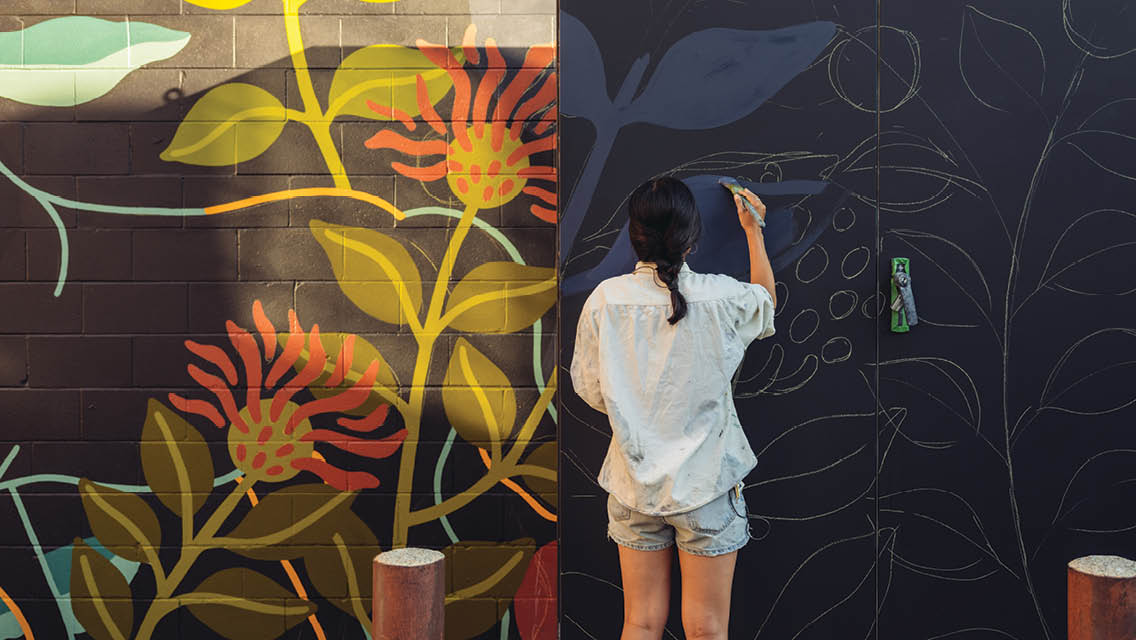Inspiration is all about waking up to possibility. It often involves feeling so passionately about something that we need to do something with that desire. And while we may think it’s only useful for pushing us to achieve great things, research suggests it’s also a boon to simply getting anything done.
Individuals who score higher on inspiration scales report more absorption in tasks than folks who score lower. They also demonstrate a stronger drive to complete their work and are less competitive, which is kind of a great combo. This shows that inspiration can move us to take action because it’s meaningful to us, not just to impress others. This type of work both satisfies our souls and produces the best results.
That said, inspiration is often hard to come by, especially if we’re stressed or depleted. We may find ourselves waiting for inspiration like we wait for a bus — and feeling disappointed and agitated when it doesn’t show up.
And while it’s true that we don’t exactly create our own inspiration, we can cultivate a readiness for it. Understanding the five traits that define this sometimes-fleeting feeling can help.
1) Inspiration is invitational.
We cannot be inspired without our permission: We must allow it to happen, which means learning to be receptive. This involves some risks.
The most challenging aspect of receptivity is accepting that we might be changed by what we receive. And change can be hard even if it’s for the better. Inviting inspiration means letting go of two ideas: that we can’t change and that maintaining a seemingly comfortable homeostasis is more important.
As we let go of those ideas, we become willing to encounter unfamiliar versions of ourselves in order to grow.
2) Inspiration isn’t about lofty achievements.
It’s important to celebrate small wins, and being open to positive emotions and practicing them daily helps us do this. This busts the myth that inspiration is only tied to the big stuff.
It also demonstrates that inspiration is a process. When we affirm each step toward a goal, we can slowly develop a sense of accomplishment; this helps brew some intrinsic motivation within us. And this can sustain us during dry spells when we’re waiting to receive more inspiration.
3) Inspiration is unrestrained.
True inspiration comes with a sense of freedom. Think of filling a hot-air balloon and loosening its moorings; it just rises on its own without much effort. The same thing can happen when we feel inspired. We feel expansive, openhearted, and lifted up without any particular effort.
This sense of freedom and lightness helps counter one of the other roadblocks to inspiration: high expectations. There’s nothing here that you really have to figure out. You don’t have to get it just right. You can release whatever feels like it is holding you back and allow inspiration to work its magic on you.
4) Inspiration is transcendent.
Elizabeth Gilbert has described all the pressure she felt after the success of her bestseller Eat, Pray, Love, and the fear that she’d never be able to equal it. But she took comfort in the idea that inspiration doesn’t come from our own minds; it’s something that happens to us.
That doesn’t mean we play no part in it, Gilbert explains, but we can’t force it. What we can do is continue to show up.
Do your job, whatever that is — writing, painting, crunching numbers — and don’t get too hung up about the periods when it seems nothing is happening. When we work with forces beyond ourselves, we have to be patient. This is how inspiration allows us to create or accomplish something that we never thought was in us.
5) Inspiration is cyclical.
It can be hard to accept that the magic doesn’t last. It is cyclical. It’s impermanent. We don’t get to live in an inspired state all the time, but when it leaves us, that doesn’t mean it’s gone forever. If we understand that inspiration is a gift and we remain willing to accept it, we’ll be ready the next time it comes around.
This article originally appeared as “Inspiration: The Engine of Joy” in the September/October 2023 issue of Experience Life.






This Post Has 0 Comments